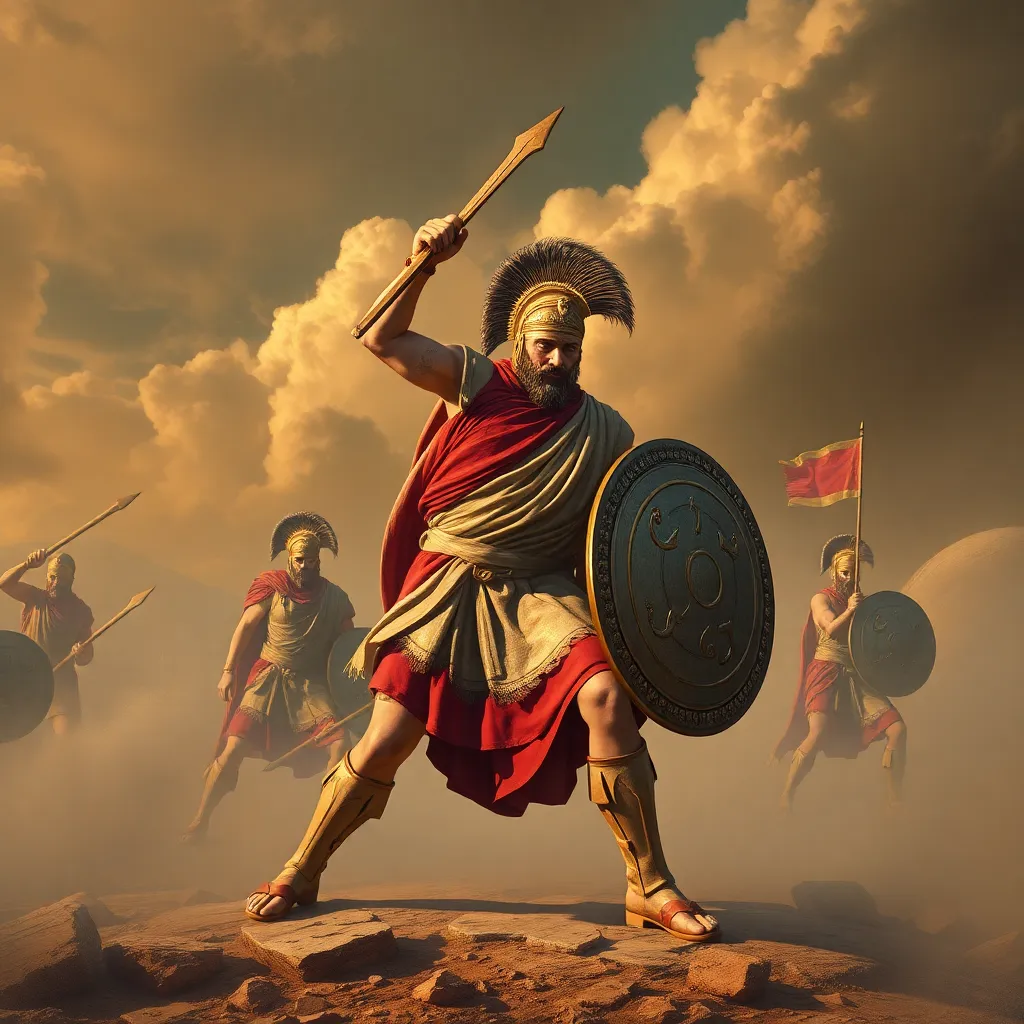Ares in the Context of Greek Warfare: Strategies and Tactics
I. Introduction
Ares, the ancient Greek god of war, embodies the brutal and chaotic aspects of conflict. As one of the Twelve Olympians, Ares was often depicted as a powerful figure, embodying the violence and aggression inherent in warfare. His importance in Greek mythology extends beyond mere symbolism; he represents the very essence of battle and the strategic elements that govern it.
This article aims to explore the significance of Ares in the context of Greek warfare, examining the strategies and tactics associated with him. By understanding Ares’ role in mythology and how it correlates with ancient military practices, we can gain insights into the complexities of warfare in antiquity.
II. Ares and His Mythological Significance
Ares holds a prominent position in Greek mythology, often regarded as the embodiment of the chaotic and destructive nature of war. Unlike Athena, who represents strategic warfare and wisdom, Ares symbolizes raw aggression and the physicality of battle.
His mythology reveals much about the Greek understanding of war:
- Role in Mythology: Ares is often depicted alongside his companions, Phobos (Fear) and Deimos (Terror), representing the psychological aspects of war.
- Symbolism: He is associated with the violent and tumultuous nature of battle, often depicted in armor and with weapons, illustrating the ferocity of war.
- Comparison with Other Deities: Unlike Athena, who is revered for her wisdom in warfare, Ares is frequently portrayed as a figure who revels in the chaos of battle, leading to a more negative perception among the Greeks.
III. The Nature of Greek Warfare in Antiquity
Warfare in ancient Greece was a complex and multifaceted affair, characterized by various practices and organizational structures. Understanding the nature of Greek warfare provides context for Ares’ influence.
- Warfare Practices: Greek warfare involved various forms of combat, including hoplite battles, naval engagements, and skirmishes.
- Military Organization: The Greek phalanx, a formation of heavily armed infantry, exemplified the strategic organization of forces, emphasizing discipline and coordination.
- Cultural Significance: Warfare was deeply embedded in Greek culture, influencing art, literature, and societal values, making Ares’ role as the god of war particularly significant.
IV. Ares’ Influence on Military Strategies
Ares’ representation in military strategies reflects the aggressive nature of ancient warfare. His influence can be observed in several key aspects:
- Representation in Strategies: Ares is often invoked in contexts requiring bold and aggressive tactics, emphasizing the importance of striking first and overwhelming the enemy.
- Concept of Aggression: The emphasis on brute force and aggression in warfare aligns with Ares’ attributes, promoting a strategy that prioritizes offense over defense.
- Examples of Battles: Notable conflicts, such as the Battle of Chaeronea, illustrate Ares’ influence, where aggressive tactics led to decisive victories.
V. Tactical Approaches Inspired by Ares
Ares’ influence extends to various tactical approaches in Greek warfare, particularly in offensive and defensive strategies. The following points highlight his impact:
- Offensive Tactics: Ares inspires a focus on aggressive maneuvers, including flanking and rapid assaults, designed to disrupt enemy formations.
- Defensive Tactics: While Ares is primarily associated with offense, his chaotic nature also influences defensive strategies that rely on unpredictability and counterattacks.
- Role of Cavalry and Infantry: Ares’ influence is evident in the effective use of cavalry to outmaneuver opponents, while infantry units engage in direct confrontations.
Case studies of famous battles, such as Marathon and Thermopylae, showcase the tactical approaches inspired by Ares:
- Battle of Marathon: The Athenians used effective tactics to surprise the Persian forces, emphasizing speed and aggression.
- Battle of Thermopylae: The Spartans exemplified Ares’ principles through their bravery, standing their ground against overwhelming odds.
VI. Ares and Psychological Warfare
The psychological aspects of warfare are significant, and Ares plays a crucial role in this dimension. His representation as a symbol of fear and chaos can be analyzed through the following points:
- Impact of Fear: Ares embodies the intimidation factor in warfare, where the mere mention of his name could instill fear in opponents.
- Symbol of Chaos: His unpredictable nature is leveraged in psychological tactics, creating uncertainty among enemy ranks.
- Historical Examples: Instances such as the use of surprise attacks or deception in battle demonstrate how psychological strategies were implemented to gain the upper hand.
VII. The Legacy of Ares in Warfare
Ares’ influence extends beyond ancient Greece, shaping perceptions of warfare and military thought throughout history:
- Shaping Perceptions: Ares contributed to the cultural image of the warrior as brave yet brutal, emphasizing physical prowess in battle.
- Influence on Military Thought: Ares’ principles of aggression and offense have informed military strategies across various cultures and eras.
- Modern Contexts: The legacy of Ares can be seen in contemporary discussions of warfare, where the balance between aggression and strategy remains a critical consideration.
VIII. Conclusion
In summary, Ares’ contributions to Greek warfare strategies and tactics are profound and multifaceted. His embodiment of aggression, chaos, and the psychological dimensions of conflict has left a lasting impact on military history. The interplay between mythology and warfare offers rich insights into how ancient Greeks viewed conflict and the divine influences that shaped their approach to battle.
As we reflect on Ares’ legacy, it invites further exploration into the intricate relationship between mythology, culture, and the art of warfare, reminding us that the lessons of the past continue to resonate in modern military thought.




